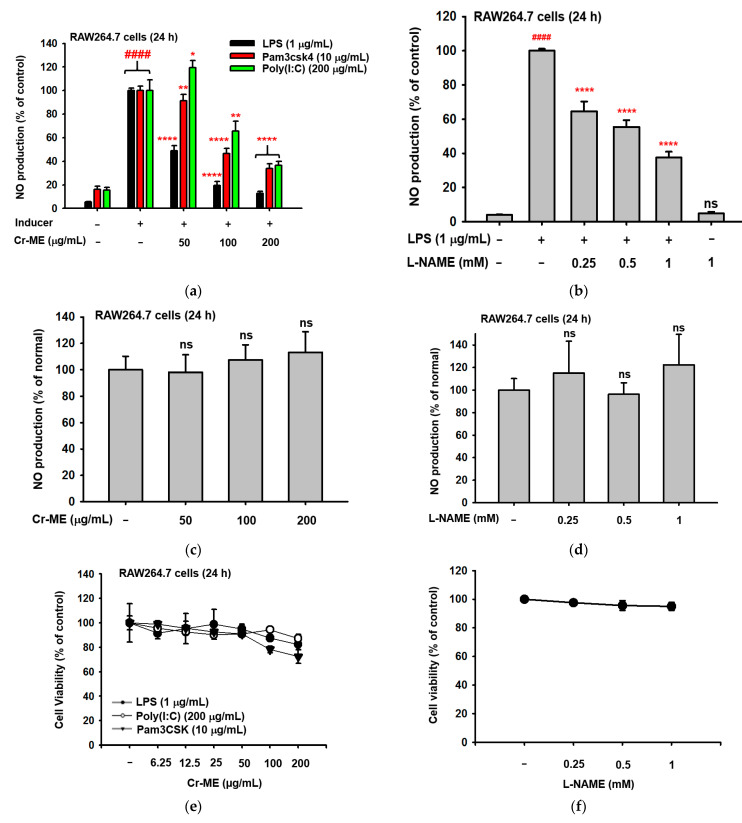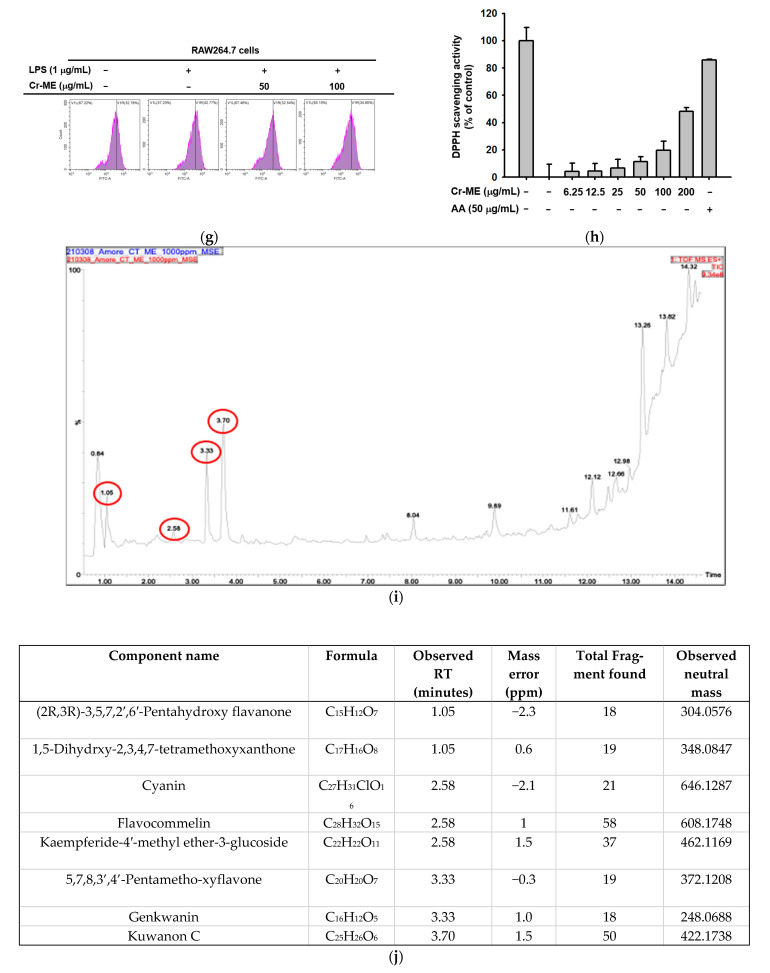Figure 1.
Effects of Cr-ME on NO production in macrophages. (a–d) The levels of NO production in RAW264.7 cells stimulated with (a,b) or without (c,d) LPS (1 μg/mL), pam3CSK (10 μg/mL) or poly(I:C) (200 μg/mL) in the presence or absence of Cr-ME (a,c) or L-NAME(b,d) for 24 h were measured by Griess assay. (e,f) The viabilities of RAW264.7 cells treated with the indicated doses of Cr-ME (e) or L-NAME (f) for 24 h were determined using the MTT assay. (g) Treatment with Cr-ME (50 and 100 μg/mL) decreased ROS generation by 32.54% and 34.85%, respectively, compared with LPS-stimulated cells. (h) DPPH radical scavenging activity was employed to check antioxidative activity of Cr-ME (100 to 200 μg/mL). (i,j) The major polyphenols of Cr-ME were identified by LC-MS/MS analysis. Representative histogram (i) and components (j) are summarized. All the data (a–f,h) are expressed as the mean ± SD of three independent experiments. Statistical significance was calculated using one-way ANOVA (Dunnett’s t-test). ns: Not significant. #### p < 0.0001 compared to the normal group and * p < 0.05, ** p < 0.01, and **** p < 0.0001 compared to the pam3CSK, poly(I:C), and LPS groups.


